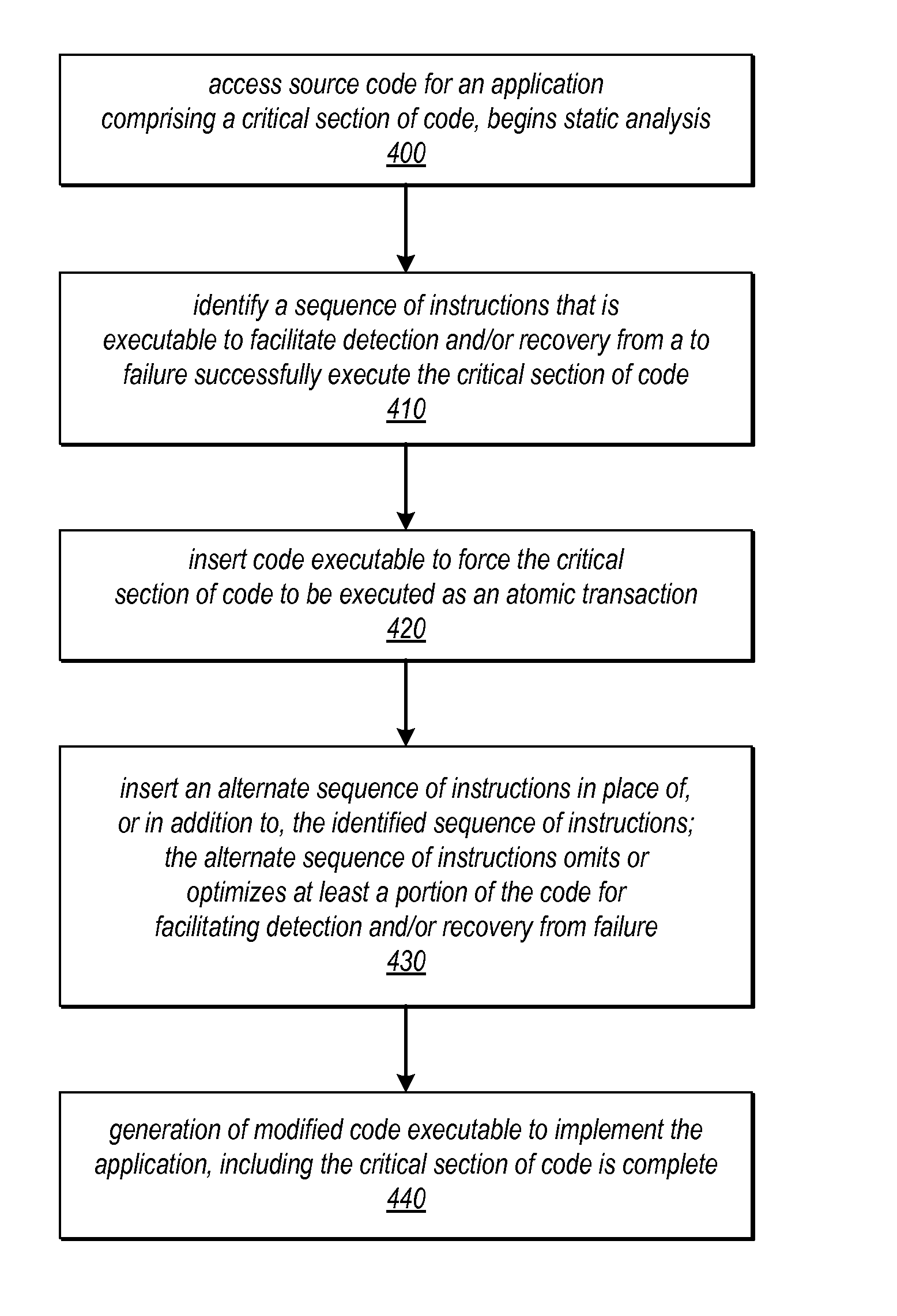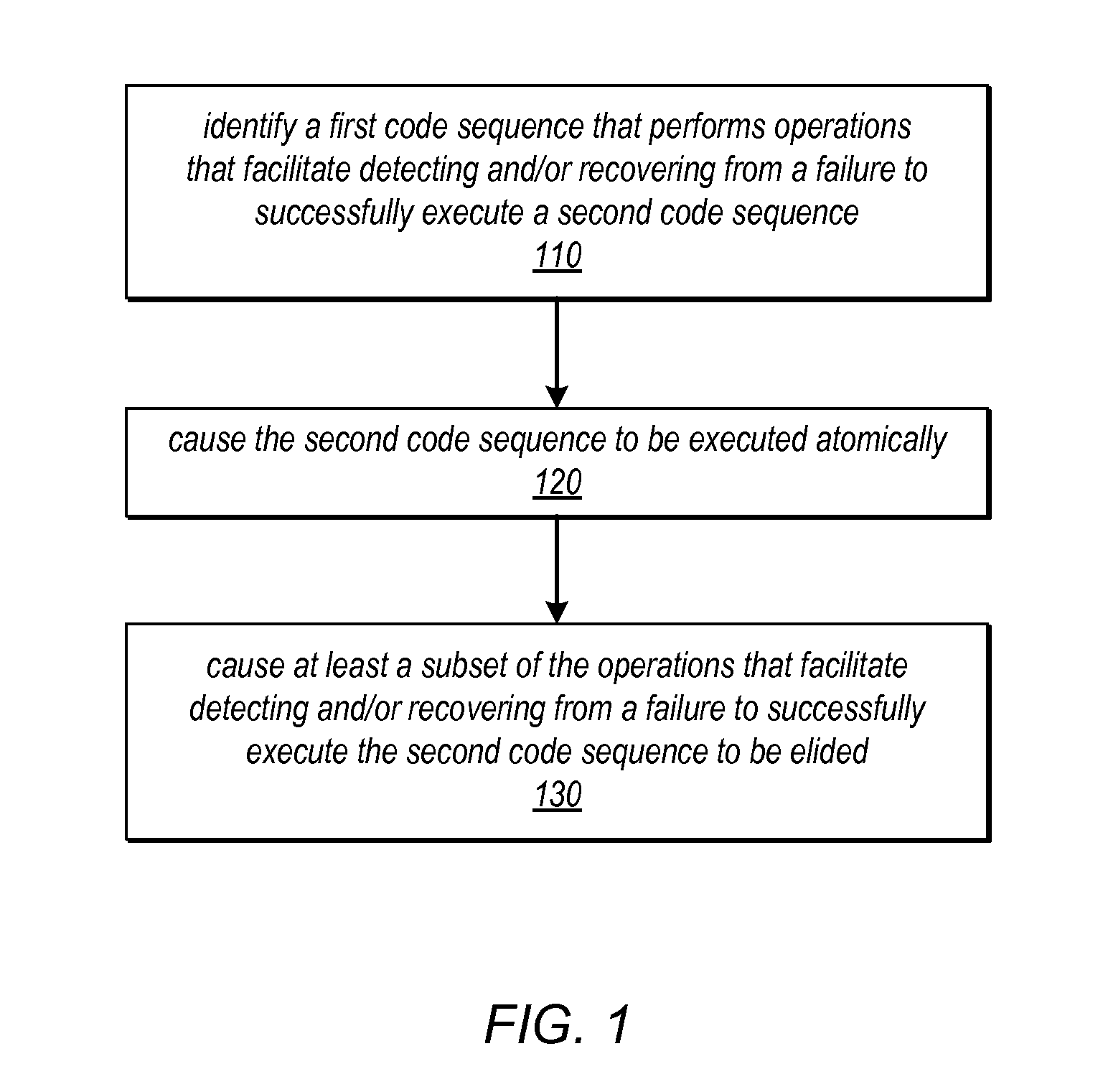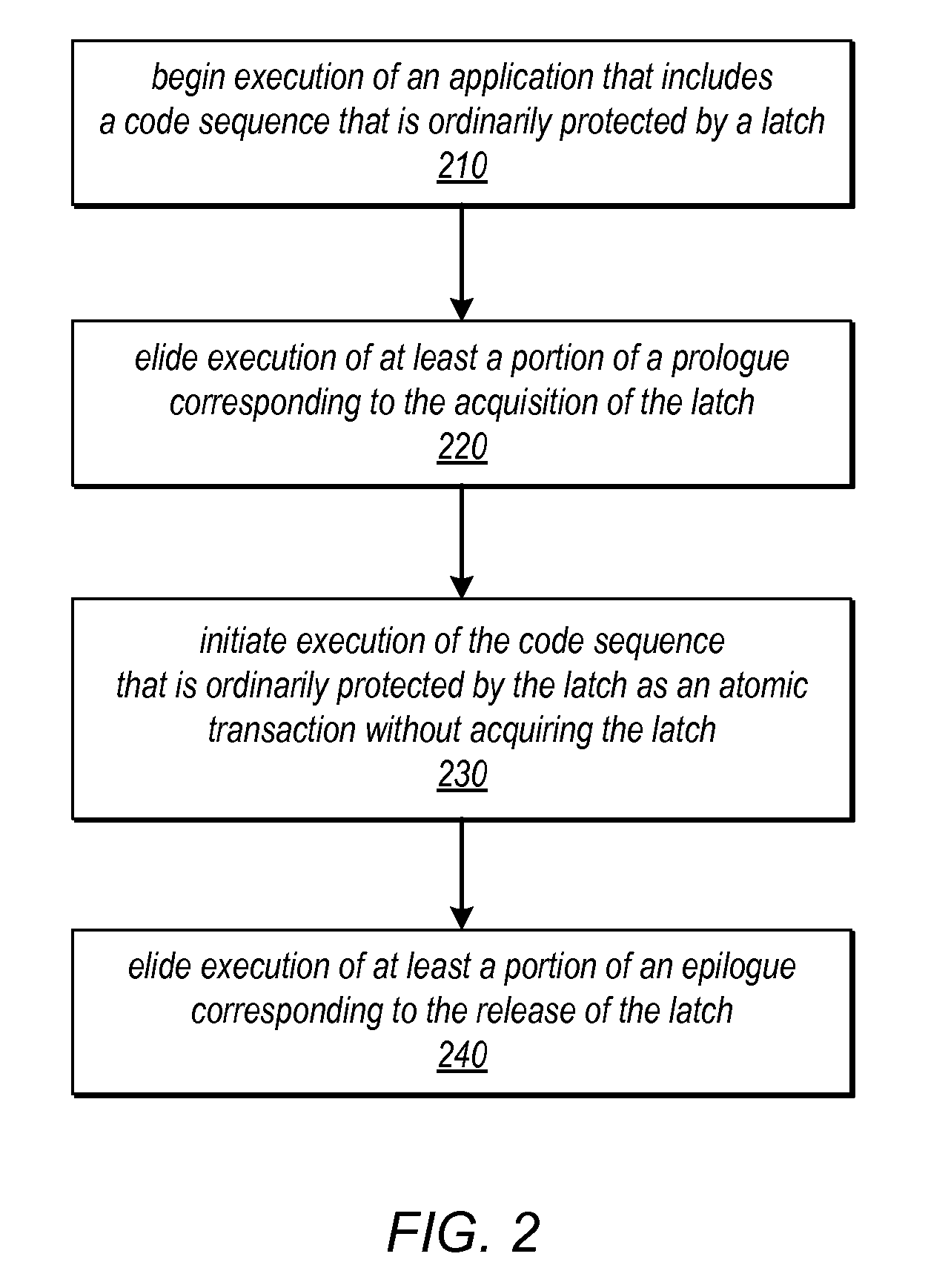System and Method for Optimizing a Code Section by Forcing a Code Section to be Executed Atomically
a technology of optimization and code section, applied in the field of system and method for optimizing a code section by forcing a code section to be executed atomically, can solve problems such as incorrect results (e.g., with respect to accessing a shared data structure or other shared resource), and achieve the effects of facilitating detecting an incorrect, facilitating recovery, and facilitating detecting another unexpected condition
- Summary
- Abstract
- Description
- Claims
- Application Information
AI Technical Summary
Benefits of technology
Problems solved by technology
Method used
Image
Examples
Embodiment Construction
[0017]As noted above, transactional memory is a promising concurrency control technology for parallel programming in the new multi-core era of computing. In some embodiments, the systems and methods described herein may use transactional memory to improve the performance of one or more sections of code by executing a related (or possibly the same) section of code atomically, e.g., using a hardware transaction. For example, the techniques described herein may improve performance in situations in which one code section (e.g., a section A) is needed only because of the possibility that steps taken in code in another section (e.g., a section B) may be interleaved with steps of other processes or threads and / or the code in section A may be only partially executed. In some embodiments, the steps in such a section B may be executed atomically, thereby preventing the possibility of its operations being interleaved with those of other threads. Thus, the code in the related section A may be e...
PUM
 Login to View More
Login to View More Abstract
Description
Claims
Application Information
 Login to View More
Login to View More - R&D
- Intellectual Property
- Life Sciences
- Materials
- Tech Scout
- Unparalleled Data Quality
- Higher Quality Content
- 60% Fewer Hallucinations
Browse by: Latest US Patents, China's latest patents, Technical Efficacy Thesaurus, Application Domain, Technology Topic, Popular Technical Reports.
© 2025 PatSnap. All rights reserved.Legal|Privacy policy|Modern Slavery Act Transparency Statement|Sitemap|About US| Contact US: help@patsnap.com



